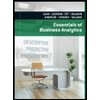Consider an individual facing the prospect of having high income, yí > 0, with probability and low income, yl, with probability 1 T, YH > YL. Prior to learning whether realized income is high or low, the individual is able to go into the market and purchase (or sell) two types of assets. Let the Asset 1 have a return structure such that it pays R₁, units of goods if y = yн and pays R₁,L units of goods if y = yL. Similarly, let Asset 2 have a return structure such that it pays R₂,H units of goods if y pays R₂,L units of goods if y = yL. The individual is endowed with w units of wealth to spend in the asset market but this wealth is not storable and hence cannot be save to purchase consumption goods. Denote by a₁ the amount of Asset 1 purchased by the individual and a2 the amount of Asset 2 purchased by the individual. Ун and The individual's problem is to maximize the expected utility from consumption sub- ject to the constraints that consumption must be financed out of income and the realized return from the asset portfolio as well as a constraint that spending on the asset portfolio must be financed out of the non-storable endowment wealth w. Consumption and portfolio spending satisfies the following constraints, Yн + R₁,Hа₁ + R₂,на₂ YL + R₁, La₁ + R₂,La2 a₁ + a₂. Note that a₁ and a2 can be positive (purchase) or negative (sell). CH = CL = = (1) (2) (3)
Consider an individual facing the prospect of having high income, yí > 0, with probability and low income, yl, with probability 1 T, YH > YL. Prior to learning whether realized income is high or low, the individual is able to go into the market and purchase (or sell) two types of assets. Let the Asset 1 have a return structure such that it pays R₁, units of goods if y = yн and pays R₁,L units of goods if y = yL. Similarly, let Asset 2 have a return structure such that it pays R₂,H units of goods if y pays R₂,L units of goods if y = yL. The individual is endowed with w units of wealth to spend in the asset market but this wealth is not storable and hence cannot be save to purchase consumption goods. Denote by a₁ the amount of Asset 1 purchased by the individual and a2 the amount of Asset 2 purchased by the individual. Ун and The individual's problem is to maximize the expected utility from consumption sub- ject to the constraints that consumption must be financed out of income and the realized return from the asset portfolio as well as a constraint that spending on the asset portfolio must be financed out of the non-storable endowment wealth w. Consumption and portfolio spending satisfies the following constraints, Yн + R₁,Hа₁ + R₂,на₂ YL + R₁, La₁ + R₂,La2 a₁ + a₂. Note that a₁ and a2 can be positive (purchase) or negative (sell). CH = CL = = (1) (2) (3)
Essentials Of Business Analytics
1st Edition
ISBN:9781285187273
Author:Camm, Jeff.
Publisher:Camm, Jeff.
Chapter11: Monte Carlo Simulation
Section: Chapter Questions
Problem 2P
Related questions
Question

Transcribed Image Text:Finally, consider the asset return structure (R1,L, R1,H) and (R2,L, R2,H) with R1,H
xR2.H and R1.L =
vectors lie on top of either of the axes. Show that sums of asset combinations
can reach any point in the (RL, RH)-plane. What does this mean? Note that our
assumption implies that the returns to both of these assets are non-contingent.
zR2.L, x 7 z. Specifically, assume that neither of the two return

Transcribed Image Text:Consider an individual facing the prospect of having high income, YH > 0, with
probability 7 and low income, YL, with probability 1 – T, YH > YL. Prior to learning
whether realized income is high or low, the individual is able to go into the market and
purchase (or sell) two types of assets. Let the Asset 1 have a return structure such that
it pays R1.H units of goods if y = YH and pays R1,L units of goods if y = YL. Similarly,
let Asset 2 have a return structure such that it pays R2.H units of goods if y = YH and
pays R2,L units of goods if y
to spend in the asset market but this wealth is not storable and hence cannot be save
to purchase consumption goods. Denote by a1 the amount of Asset 1 purchased by the
individual and az the amount of Asset 2 purchased by the individual.
The individual's problem is to maximize the expected utility from consumption sub-
ject to the constraints that consumption must be financed out of income and the realized
return from the asset portfolio as well as a constraint that spending on the asset portfolio
= YL. The individual is endowed with w units of wealth
must be financed out of the non-storable endowment wealth w.
Consumption and portfolio spending satisfies the following constraints,
Ун + Ri,нај + Rz, H@2
YL + R1,La1 + R2,La2
(1)
(2)
(3)
CH
CL
ai + a2.
Note that aj and az can be positive (purchase) or negative (sell).
Expert Solution
This question has been solved!
Explore an expertly crafted, step-by-step solution for a thorough understanding of key concepts.
Step by step
Solved in 3 steps with 11 images

Recommended textbooks for you

Essentials Of Business Analytics
Statistics
ISBN:
9781285187273
Author:
Camm, Jeff.
Publisher:
Cengage Learning,

Essentials Of Business Analytics
Statistics
ISBN:
9781285187273
Author:
Camm, Jeff.
Publisher:
Cengage Learning,